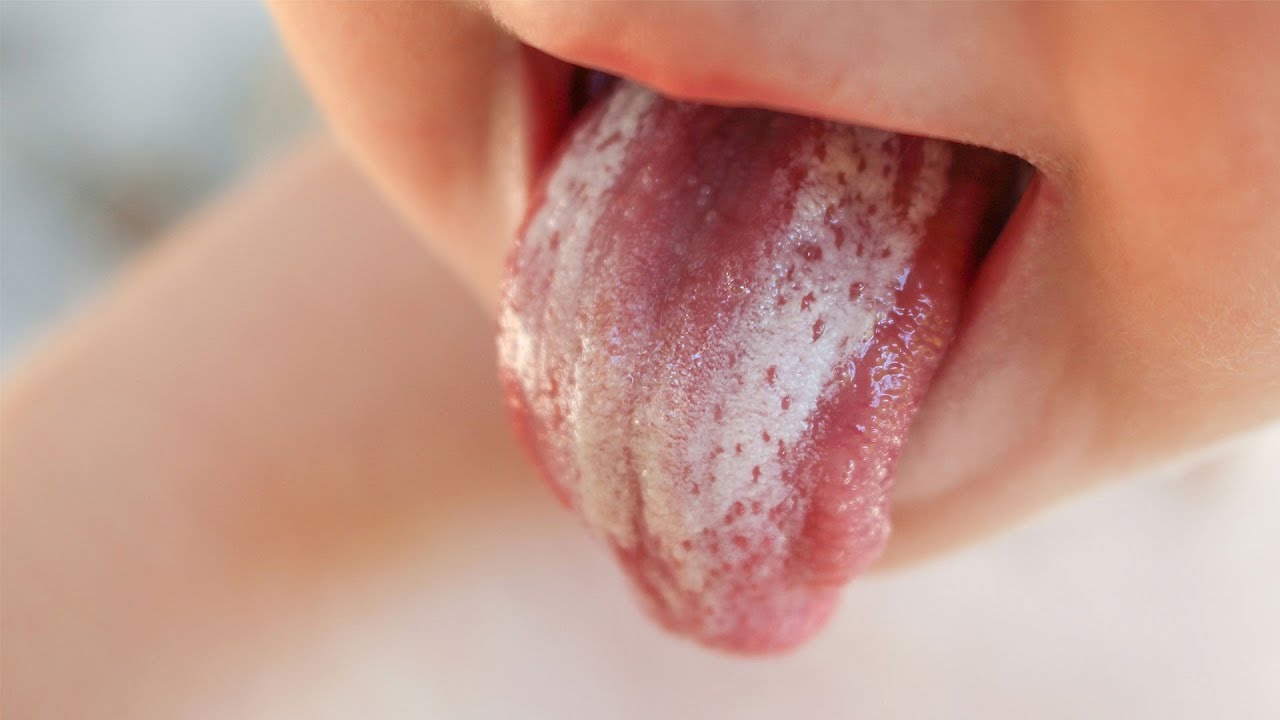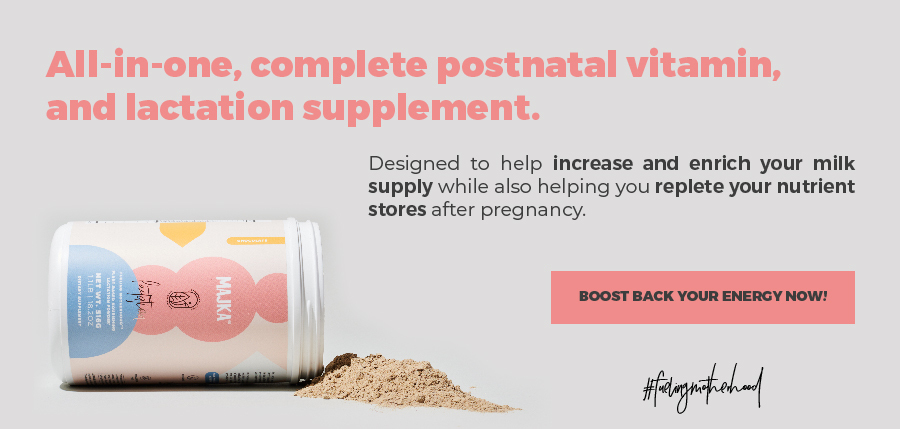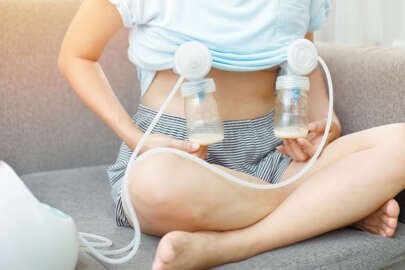
When you are learning to feed your baby, you may face some challenges, it’s possible that you start seeing things that you´ve never heard about and that you would like to understand. In this article, we want to tell you about one that is common: baby´s thrush; with the intention of giving you the information necessary to identify it and to know what you could do about it.
We also recommend you to always keep in mind that as though information is a big help, your doctor will always have the best call when it comes to your specific case.
What is thrush?
A thrush is a fungus candida albicans infection that can be located either in the mouth of your baby or in your breast. It can be a cause of pain and may make it difficult to breastfeed.
A baby’s thrush is also called: oral candidiasis and it is shown by white patches on mucosal surfaces of the mouth that generally causes no problem in healthy babies. It may look like a white coating on the tongue like cottage cheese that doesn’t go away easily or it could look like white spots in your baby’s mouth.
It is estimated that 5-7% of babies less than one month old generally develop oral thrush.
When found in your breast, thrush could be accompanied with a sensation of pain in the nipples or breast after feeding your baby, when this had not previously been the case.
Other symptoms of breast thrush are: fever, warm, red patch on the breast, itching or burning sensation in the nipple, cracked nipples that don’t heal and/or red nipples after feedings.
Where does baby’s thrush come from?
Candida is an organism that hangs out most of the time in the mouth or in the vagina; your body defends you from it. But if a person is sick, or has hormonal changes (which you do during pregnancy) or is using antibodies; the balance of the organism can be upset and allow the candida to grow and cause a thrush infection.
If you already have thrush, your baby can get it through the birth canal when there is a vaginal birth or from your breast while breastfeeding.
Other ways in which your baby can get thrush is through an infected pacifier or if you or/and your baby had been taking antibiotics to fight another infection (which kills off the “good” bacteria that was defending from thrush) or if he/she has a depressed immune system.
Milk tongue vs thrush
When checking your baby to make sure that everything is going well you may get confused with some signs that are completely normal such as milk tongue.
Your baby is either fed with breast milk or formula and both of them can leave a white coating on your baby’s tongue.
A milk tongue looks very similar to a thrush but an important thing to know is:
- A milk residue will stay just in your baby’s tongue and can be scraped easily, while thrush is all around your baby’s mouth and does not go away easily.
Chapped lips
Thrush is most likely to appear in your baby’s mouth and even in the throat but it can also move to the lips, this could happen while your baby has contact with your breast if it is infected or if he/she already has thrush and licks his/hers lips.
If your baby has chapped lips, his/her lips may look sore, red, or dry; they feel dry to the touch with cracks appearing on the surface of the lips and becoming deeper over time, some cracks may bleed and the skin around the lips may become dark.
It is normal if your baby sometimes gets chapped lips, they usually go away within time, but if this gets worse or becomes chronic, then you should let your healthcare provider know as it could be a sign of this infection (not exclusively).
Prevention and treatment for thrush
Your baby’s thrush could go away by itself. In general, the oral microbial flora and the body defenses will keep your baby´s organism under control. But, if his/hers defenses are compromised the colonization of this organism will take place.
If your baby is having a hard time with thrush symptoms there is medication that your pediatrician will give him/her to make it easier, such as topical antifungal agents or may recommend the use of lactobacillus (this is only a doctor call).
Here are some things that you can do at home to prevent and treat thrush:
- Allow your breasts to dry completely between feedings: this will prevent the growth of bacteria and other microbes.
- Change your nursing pads after feedings.
- Wear cotton bras that don’t trap moisture and wash them frequently in hot water.
- Dry the clothes that have direct contact with the infection in the sun.
- Properly sanitize pump and bottle parts as recommended by the manufacturer.
It is also important to wash and sanitize anything that has come in contact with your breast or your baby’s mouth, these washings will need to be done daily until symptoms resolve or there will be risk of recurrent infection.
When thrush is present, it is important that you and your baby are both treated, even if one of you has no symptoms because the infection could be latent in one of you and can get infected later.
Babies are checked by their doctor very often in the first year, so thrush is most likely to be found and monitored, which will help to get treatment on time and avoid difficulties.
*Let your doctor know about the symptoms you or/and your baby is having to get the right treatment for you.
Should I stop breastfeeding if thrush is present?
Breastfeeding your baby is an amazing opportunity to bond and to keep your baby healthy. The good news here is that you can and should keep up with breastfeeding even if thrush is present.
The treatment for thrush is safe for you and for your baby and doesn’t get in the way of breastfeeding.
While having symptoms it may be hard or painful to breastfeed but the good news is that this will only last a few days.
As mentioned before, when thrush is present, you and your baby will be treated and the symptoms should improve within 2 to 3 days (the infection will go away in a little longer but you will feel ok before it goes) so this will make breastfeeding easier.
*If the symptoms take more than 5 days after treatment, it’s important that you let your doctor know.
In Breastfeeding 101 we hope this information has been helpful for you, we also invite you to follow all our content regarding the subject of having a baby.
If you want to deppen more in baby´s thrush, we share with you some of the sources that made this article possible:
Breastfeeding and Oral Thrush in Babies I News Medical Life Sciences
Breastfeeding and thrush I NHS
How to treat chapped lips in a newborn I MedicalsNewsToday
Infant Feeding – Breast and Nipple Thrush I The Woman´s
Management of Thrush in babies I NHS
Neonatal thrush of newborns: Oral candidiasis? I Wiley Online Library
Oral Thrush in an Infant: A Case Report with Treatment Modalities I ResearchGate
Prescribing for oral thrush in babies and prescribing for surface and ductal thrush in lactating women I NHS
Oral thrush (mouth thrush) I NHS
Thrush in the Breastfeeding Dyad: Results of a Survey on Diagnosis and Treatment I Clinical Pediatrics
Thrush and Breastfeeding I The Breastfeeding Network
Annie Rueb





